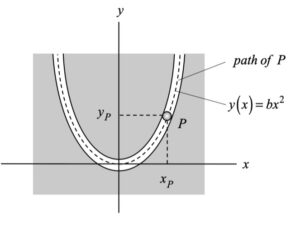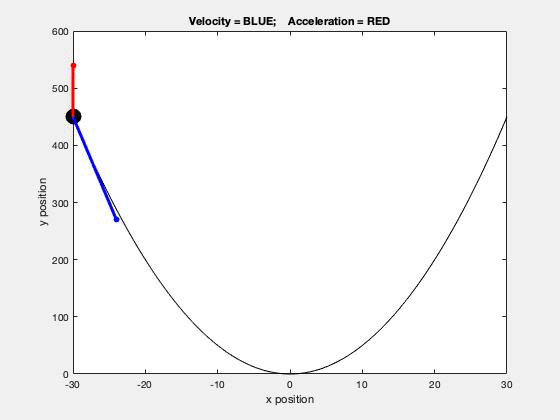

Discussion and hints:
Here the y-component of the position for P is known not as an explicit function of time, but rather as a function of the x-component of its position. For velocity and acceleration, you need derivatives with respect to time. Recall that you can use the chain rule of differentiation in order to effect the derivative of y with respect to time: dy/dt = (dy/dx)*(dx/dt).
Provided above is an animated GIF of the motion for P. Notice how the velocity vector for P is always tangent to the path of P. We will soon see why this is true, in general. If you carefully watch the motion of P, you will see that the horizontal component of the velocity vector is constant - WHY is that? Also, the acceleration of P always points vertically for this problem - WHY is that?
We encourage you to interact with your colleagues here on conversations about this homework problem.